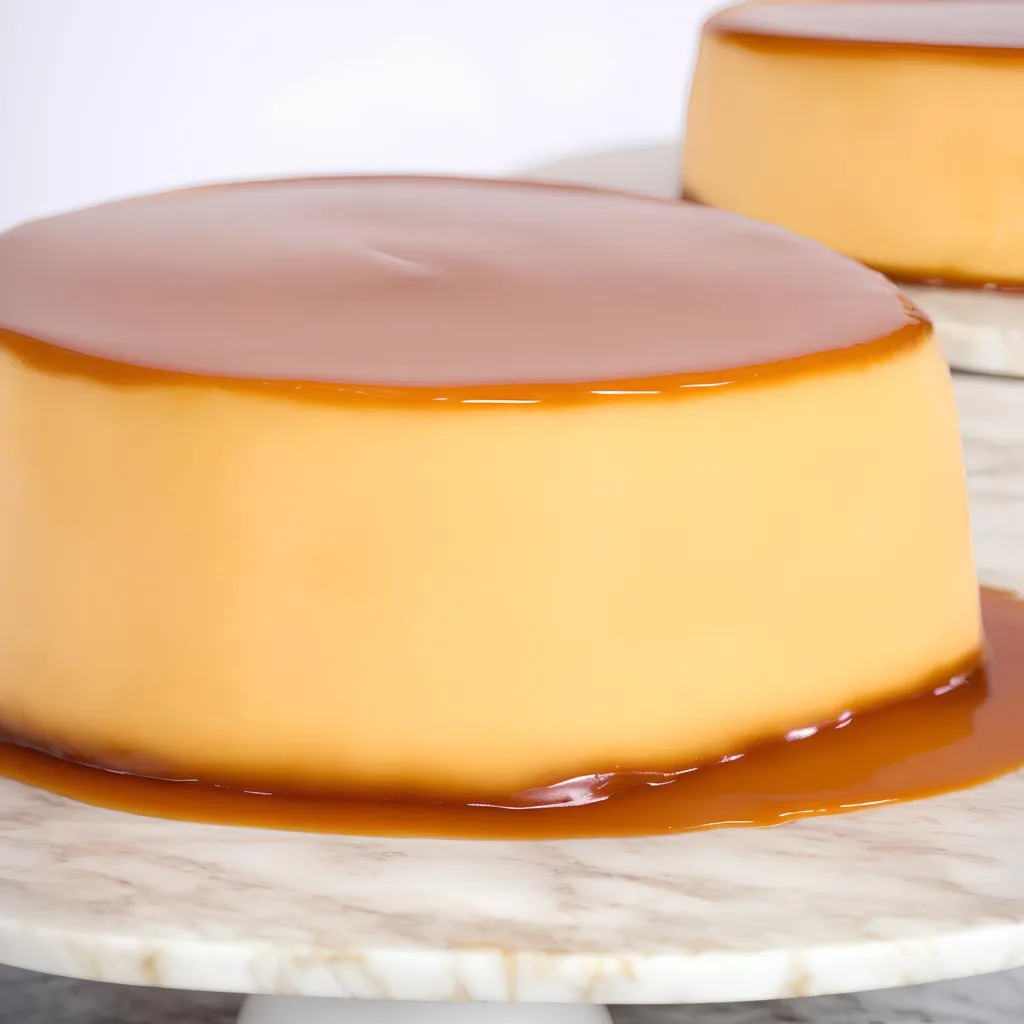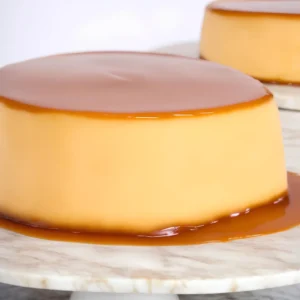
Creme caramel, also known as flan, is a classic dessert loved for its smooth custard topped with rich caramel. Originating from France, this decadent treat has charmed taste buds around the world with its creamy texture and sweet caramel flavor.
Despite its elegant appearance, making creme caramel is surprisingly simple, making it an ideal dessert for both casual dinners and special occasions.
Crafting the perfect creme caramel requires a delicate balance of ingredients and techniques. The creamy custard is enriched with eggs, milk, and a touch of vanilla extract, creating a luscious texture that melts in your mouth.
Meanwhile, the caramel adds a delightful contrast with its deep, amber hue and rich sweetness. Baked to perfection, the custard sets beautifully while maintaining a gentle wobble at its center, ensuring a velvety smooth texture with every spoonful.
While it may seem intimidating at first glance, mastering the art of creme caramel is well within reach for home cooks of all skill levels. With a few simple steps and minimal ingredients, you can create a stunning dessert that will impress your guests and leave them craving more.
Expert Tip: To ensure even baking, place the baking dish in a water bath (bain-marie) while in the oven. This gentle heat distribution helps prevent the custard from curdling and ensures a silky texture.
Granulated Sugar: Granulated sugar lends its sweetness and depth of flavor to the dessert. When heated, sugar caramelizes, creating a rich and golden syrup that coats the custard.
Milk: Whole milk forms the base of the custard, contributing to its creamy texture and rich flavor. Its subtle sweetness and smooth consistency complement the other ingredients, resulting in a velvety smooth dessert.
Eggs: Eggs provide structure and richness to the custard, giving it a luxurious mouthfeel and silky consistency. Their protein content helps the custard set during baking, ensuring a firm yet delicate texture.
Vanilla Extract: Vanilla extract infuses the custard with its warm and aromatic flavor, adding depth and complexity to the dessert. Its floral notes complement the sweetness of the caramel, creating a harmonious balance of flavors.
Expert Tip: For a smoother custard, strain the egg mixture before pouring it into the baking dish to remove any lumps or air bubbles.
Expert Tip: Be cautious when making the caramel sauce, as melted sugar can cause severe burns. Use a heavy-bottomed saucepan and watch the caramel closely to prevent burning.
To avoid air bubbles, gently whisk the custard mixture and pour it through a fine-mesh sieve before baking. This helps to remove any lumps or air pockets, resulting in a smooth and creamy texture.
Caramelization relies on precise temperature control and careful attention to prevent crystallization. Make sure to dissolve the sugar completely in water before heating, and avoid stirring once the mixture starts to boil. Additionally, brushing the sides of the saucepan with water can help prevent crystallization by dissolving any sugar crystals that form.
While whole milk is preferred for its richness and creaminess, you can use low-fat milk or dairy-free alternatives such as almond milk or coconut milk. However, keep in mind that the texture and flavor of the custard may vary slightly depending on the milk used.
Chill the creme caramel in the refrigerator for at least 2 hours, or preferably overnight, to allow it to set fully and develop its flavors. This ensures a firm yet creamy texture that is perfect for slicing and serving.
Yes, creme caramel can be made ahead of time and stored in the refrigerator for up to 2 days. Simply cover the baking dish with cling film and keep it chilled until ready to serve. Allow the creme caramel to come to room temperature for about 15 minutes before slicing and serving.
Here are some more recipes for you to enjoy! If you my recipes don’t forget to rate and leave a comment.
If you have any recipe suggestions, please do not hesitate to ask me. A great way to stay in contact with me is through Instagram, Facebook, Twitter and YouTube. Don’t forget to tag me @CookwithNabeela in your recipe photos!

Subscribe now to receive my latest recipes directly in your inbox. Stay up-to-date and never miss out!

I love to cook! I want to share with you my favourite, delicious family-friendly recipes. I want to inspire you to create fantastic food for your family every day.
Latest comments (2)
In your ingredients list you state 3 Tbsp water but your method states 6 Tbsp water? Which is it 3 or 6 Tbsp water?
3 tablespoons of water x